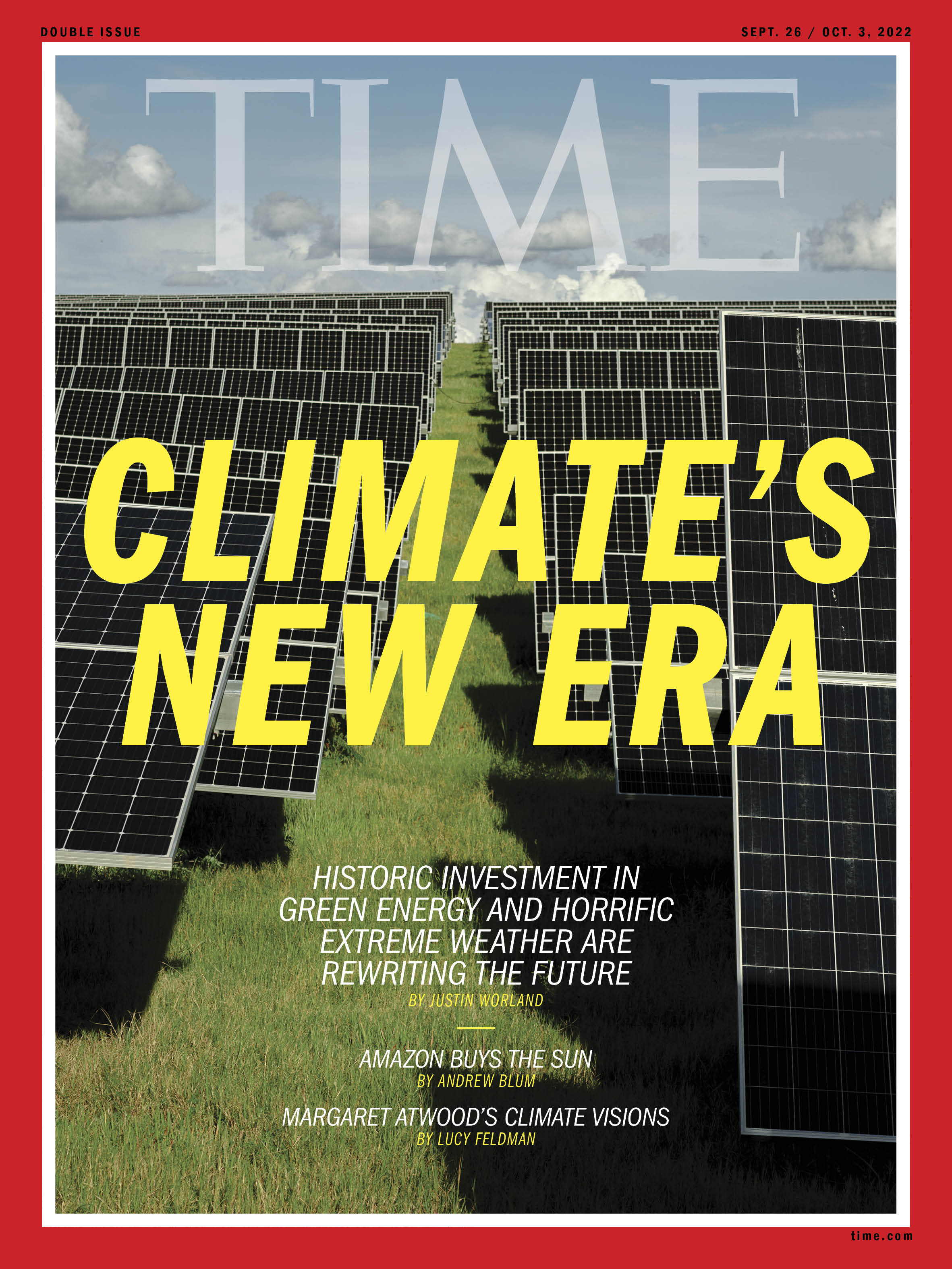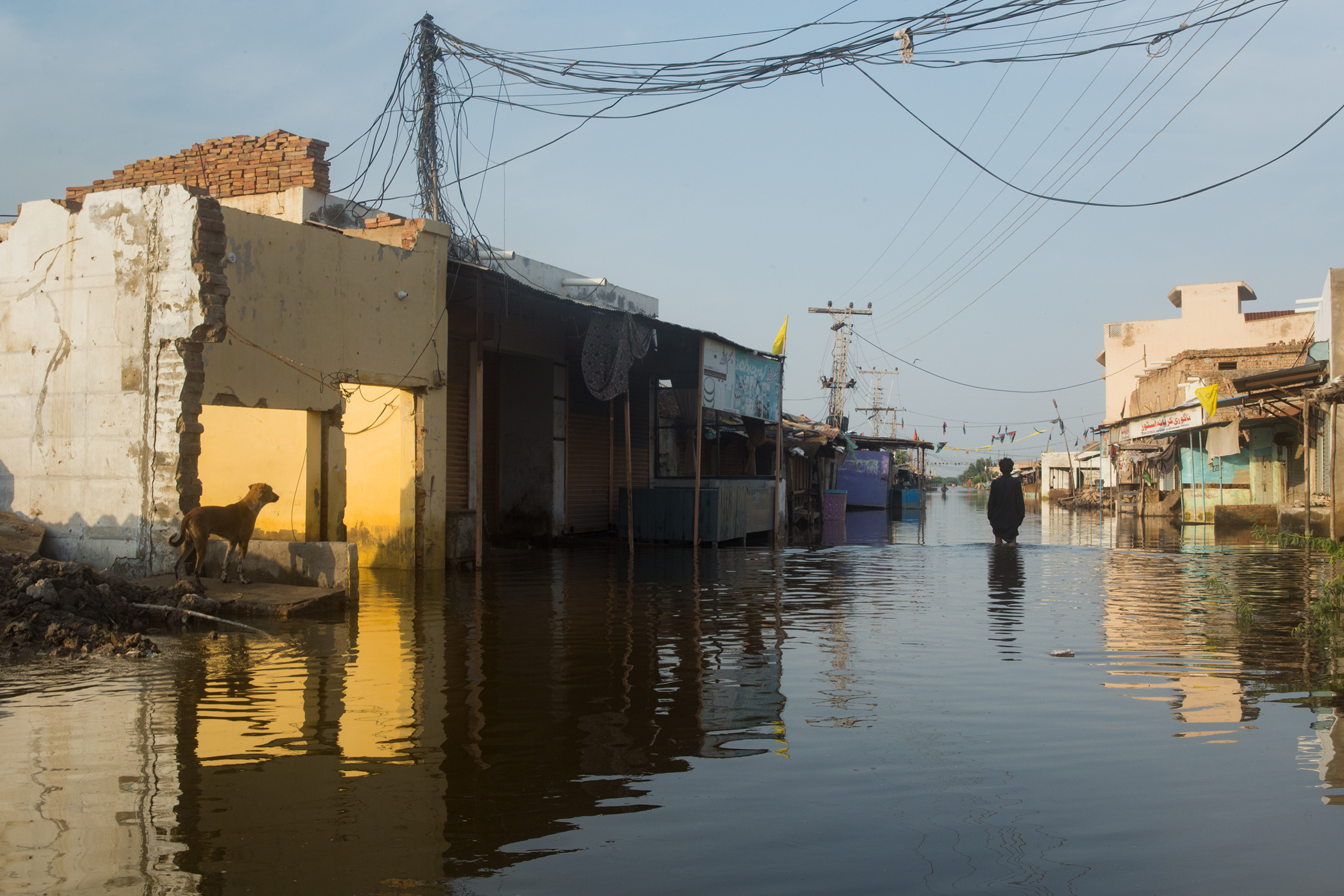Last fall, Miami-Dade County committed to eliminating its entire carbon footprint within three decades. It was an ambitious target, but also a symbolic one: a private utility company, Florida Power and Light, provides the region’s electricity and operates free of county oversight. “We had no control,” says Jim Murley, the county’s chief resilience officer. But then something seemingly miraculous happened: in June, the utility said it would cut emissions on its own—and even faster than county officials had promised. “We were just stunned,” says Murley.
For years, activists, politicians, and academics have tried to transition the global economy away from fossil fuels, with only mixed results. Overnight, it’s as if everything has changed, and for the first time in a long time, there’s a glimmer of hope. The price of renewable energy has fallen sharply, making it a more cost-effective choice in most cases. The Russian invasion of Ukraine has codified the strategic risks of reliance on fossil fuels. And at last, government has stepped in decisively. The Inflation Reduction Act in the U.S. will spend hundreds of billions of dollars to push the country closer to decarbonizing. The European Union’s REPowerEU initiative will do the same across the Atlantic. Together, they will spur trillions in private investment.

Buy a print of TIME’s Climate’s New Era cover
The newfound sense of hope is tempered, though, with a growing sense of despair about the damage already baked in. In August, unprecedented flooding left a third of Pakistan underwater in what U.N. Secretary-General António Guterres described from the ground as the worst “climate carnage” he had ever seen. In Europe, drought has left crops dead and riverbeds dry; officials implemented water restrictions in France, Germany, and Spain. Cities across California faced record-high temperatures in September, hitting 115°F in several places and leaving the state to beg residents to cut their electricity use to avoid rolling blackouts. Those who follow the science, even just loosely, know that it will get worse.
Read More: Pakistan Flooding Raises Tough Questions About Who Should Pay For Catastrophic Climate Impacts
With climate change, as with anything else, it’s hard to draw a bright line between one era and the next. But the historic investment in greening the economy and the acceleration of climate-linked devastation suggest a very different future is at hand. “Life has changed,” Gina McCarthy told me on Sept. 8 before stepping down as President Biden’s top climate adviser. “Everybody’s trying to get their head around an entirely different paradigm.”
This new world will be defined by extremes. Finally, countries are building a global green economy, offering an optimistic vision of a better future. But the tragic human costs of climate change, long warned about by scientists, are upon us and getting worse. We still have a chance to shape these two developments: our best hope is that progress will minimize despair.
It wasn’t always a sure bet that the world would embrace the energy transition. The U.S., as the world’s only superpower, its largest economy, and its second largest emitter, set the pace over the years with a series of failed attempts to enact climate policy. Abroad, countries committed to reduce emissions only to watch their collective efforts falter. As activists marched and scientists’ warnings mounted, hope started to look misguided.
Which is why this summer’s passage of the Inflation Reduction Act represents such a departure. The law signals not only that the energy transition in the U.S. has begun, but that it will move quickly. Hundreds of billions of dollars in tax incentives will bring down the cost of clean energy, spurring companies to decarbonize. Modelers now expect U.S. emissions to fall 40% from 2005 levels by 2030.
Perhaps more significant is the clear signal to private companies that the economy is transitioning. Firms will invest trillions of dollars based on that signal. A report from Third Way, Boston Consulting Group, and Breakthrough Energy identifies six nascent technologies spurred by the law— including electric vehicles, low-carbon hydrogen, and clean steel—that will together have a cumulative $60 trillion market by 2050. These investments mean remade cities and millions of jobs, and the potential for emissions cuts far greater than what models suggest. Even in places like Florida and Texas, the economics of renewable energy is besting ideology: it’s just cheaper. Every single state submitted a plan to the Biden Administration outlining a blueprint for an electric-vehicle charging network. “Yes, Texas. Yes, Oklahoma. They didn’t argue,” says McCarthy. “They said, ‘Damn, I have to be in this.’”
Read More: How The Inflation Reduction Act Will Spur a New Climate Tech Ecosystem
Leaders abroad are responding to the signal too. India is advancing a carbon market scheme to cut emissions, Germany approved a $180 billion program to facilitate clean energy, and Australia adopted its first climate legislation in a decade. While global tensions have hurt some green collaboration, countries including the U.S. and China are racing to own the future of clean energy, clean manufacturing, and clean transportation. “This is a healthy competition from a climate-change point of view,” says Fatih Birol, the head of the International Energy Agency (IEA).
But even as we remake the global economy, the human cost of climate change will grow quickly too. Investment and innovation will need to catch up with the destruction that we’ve already unleashed on the world, especially in the Global South. A tropical storm in April killed hundreds across the Philippines. A heat wave in India this spring cost farmers large shares of their crops, and a multiyear drought in East Africa has 50 million people facing extreme hunger. The dollar cost runs to the trillions: Africa loses up to 15% of annual GDP because of climate change, and could lose 30% in the coming decades, according to the Africa Development Bank.
All told, billions of lives depend on how the world responds in this new era. So far, the picture doesn’t look good. “We are living in the era of loss and damage,” says Tasneem Essop of the Climate Action Network. “What is becoming even more clear, unfortunately, is that ruling elites in rich countries just do not give a damn about the lives of people living in the Global South.” Some, perhaps most, in the North consider this a sad but distant reality. Yet this too is changing: extreme weather at home is finally convincing the wealthy that no one will be immune. The western U.S. is under persistent, river-shrinking drought; flooding is destroying communities in Switzerland and knocking out water supplies in Jackson, Miss. The heat is a literal killer.
If you’ve been reading and thinking about climate change, you’ve heard of tipping points: thresholds that, when crossed, will trigger nonlinear changes in the climate. Permafrost melting in the Arctic could release long-trapped carbon, accelerating global warming. The collapse of the West Antarctic Ice Sheet could raise sea levels up to 10 ft. A Sept. 9 study published in the journal Science found that both of these tipping points, along with four others, are likely to be triggered at somewhere between 1.5°C and 2°C of warming. The earth has warmed 1.1°C since the Industrial Revolution. A May report from the World Meteorological Organization found that we have a 50-50 chance of hitting the 1.5°C threshold in five years.
But there are other tipping points. Greta Thunberg told me in 2019 that she hoped to trigger a social tipping point where public outrage would lead governments to act. Technology, too, can reach tipping points as costs decline. According to the IEA, a system that collects solar power cost $106 per watt to build in 1975; in 2020 it cost 20¢. A similar, faster revolution for direct air capture of carbon, battery storage, and a range of other technologies would help pull us back from the brink. In this new era, our present is defined by both hope and despair. For all our futures, we have to do everything we can to ensure that we hit the positive tipping points first.
More Must-Reads From TIME
- The 100 Most Influential People of 2024
- Coco Gauff Is Playing for Herself Now
- Scenes From Pro-Palestinian Encampments Across U.S. Universities
- 6 Compliments That Land Every Time
- If You're Dating Right Now , You're Brave: Column
- The AI That Could Heal a Divided Internet
- Fallout Is a Brilliant Model for the Future of Video Game Adaptations
- Want Weekly Recs on What to Watch, Read, and More? Sign Up for Worth Your Time
Write to Justin Worland at justin.worland@time.com
